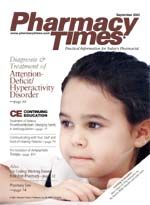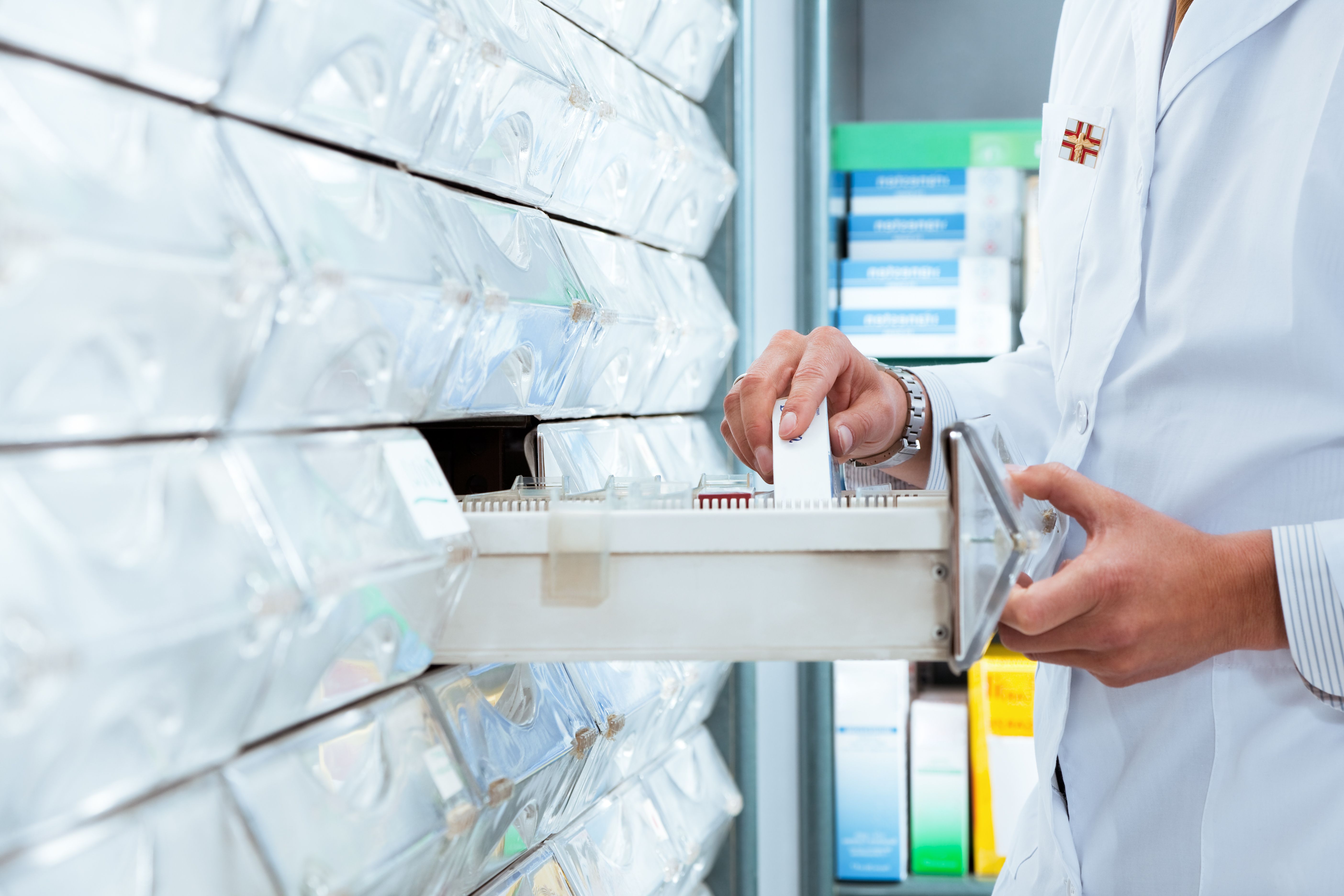Publication
Article
Pharmacy Times
Bar Coding: Working Toward Error-Free Pharmacy
The issue of bar coding to avoid medication errors has been making headlines. The subject gained a lot of media attention in March of this year when the FDA announced that it would require bar codes on all medications. The FDA has put in place a 3-year plan to allow for pertinent organizations and pharmacies to start using bar-coding technology. A 1999 report from the Institute of Medicine, To Err Is Human: Building a Safer Health System, suggested that up to 98,000 Americans die annually from medical mistakes; 7000 of those are attributed to prescription errors. An AmeriSourceBergen Index survey revealed that patients are just as concerned as health care professionals, and they support technology that could help reduce this serious problem.
According to the survey of 1033 adults nationwide, conducted in January 2003, 23% of Americans, nearly 1 in 4, had a family member who received the wrong medication at some point from a health care professional. A key topic addressed by the survey was how to reduce medication errors. Seventy-five percent of the respondents said that they favored bar-code technologies. Bar coding gained much support from 18- to 34- year-olds, with 82% saying that the government should require drug manufacturers and companies that repackage drugs to put bar codes on all prescription medications.
Once the FDA mandate goes into effect, bar codes on medication will identify the drug, its dosage form, and its strength. Before a nurse administers medication in a hospital, he or she will be able to scan the bar code on the drug against the patient?s wristband. After this step has been taken, software will compare the data with the physician?s order to make sure that the right drug and dosage are being given to the correct patient at the appropriate time.
Although some Veterans Administration hospitals and other pioneering hospitals are already using bar-coding technology, only 5% of US hospitals now routinely use such systems, according to industry consultants. Registered pharmacist Max J. Peoples, president of RxScan, is a strong supporter of bar coding. For many years, his company has been developing National Drug Code (NDC) barcode scanning equipment, used to reduce dispensing and medication errors. ?In my mind, the goal is perfection. There is no room for error in medication. When you give someone the wrong medication, it?s a big problem,? said Peoples, who is also president of Uptown Pharmacy in Westerville, Ohio. Also, the reason RxScan has its line of products is that ?we test them in our pharmacy first,? he said. It is his belief that all health care products?including medical supplies, prescription medical products, and OTC medication?should carry an NDC bar code.
For example, the RxScan Barcode Scanner plugs into a pharmacy?s computer system and allows the pharmacy to scan bar codes on labels and automatically inserts the code into the pharmacist?s application. Another RxScan product, the RxScan Plus Prescription Verifier, is designed to eliminate dispensing errors. This handheld portable unit will scan the NDC number bar code on the patient label or receipt and match it to the scanned NDC number bar code on the stock drug container from which the prescription is being filled. Because it is portable, the scanner can be carried and used at any location during the prescription filling and checking process.
A study of 129 RxScan Plus Prescription Verifiers showed that more than 5% of medications first selected to fill a patient prescription were wrong. This means that the equipment was able to catch dispensing errors in >7 million community pharmacy prescriptions, according to Peoples.
RxScan is not the only the company that has developed bar-coding systems. Cardinal Health, Baxter Healthcare Corp, and McKesson Auto-mation also have systems in place at hospitals.
Cardinal Health has been active in bar-coding systems for quite some time, according to Jim Martin, vice president of marketing?business solutions. ?We support anything that enhances patient safety. One of the biggest safety issues is scanning at the bedside. Only 40% of the drugs are bar coded down to the dose,? he said.
Before Cardinal installs its bar-coding technology, personnel visit the hospital and assess the best possible system. ?We understand a hospital?s need and the need to be flexible. The system we recommend depends on the kinds of drugs, the dispensing ratio, doses, staff, and hospital size,? said Martin. Cardinal offers a number of systems, including a full outsource model, in which Cardinal installs the system and puts all the bar codes on the drugs. Otherwise, a hospital may choose to have Cardinal install the system and have the hospital take over the responsibility of bar coding the drugs, according to Martin. The company is working on an analysis of how many adverse drug events are prevented.
In December 2002, Baxter introduced ENLIGHTENEDHRBC Bar Coding, a high-resolution bar coding for flexible intravenous (IV) bags. The coding works with current technology and includes the lot number and the expiration date.
?Bar coding is an absolute piece? in ensuring patient safety, said Eric Paul, vice president and general manager at Baxter Healthcare. ?The highest risk is around the infusion,? he explained. Bar-coding successes, according to Baxter, come when bar coding is part of a comprehensive system. Baxter?s bar coding works not only with commercially available scanners, but also with Baxter?s Patient Care System, a computerized, wireless patient-information and medication-management system. Patient Care works with Baxter?s COLLEAGUE CX infusion pump. The link between the 2 systems allows the caregiver an automatic comparison of the patient at the point of care, the medication, the infusion pump settings, and the physician?s IV medication order. This system increases patient safety because it verifies the right patient, medication, dose, time, and course of administration.
Patient Care not only puts the nurses at ease about administering medication, but it makes the patient more comfortable. ?It?s a good way to interact with patients because patients are happy to learn about the technology. It creates a better relationship between patient and caregiver,? added Paul.
Mary Beth Navarra, director of strategic planning for McKesson Automation, said that the company has been conferring with the FDA on bar coding. ?We have spent a lot of time working with the FDA and giving [officials] practical advice about inputting bar coding and sharing our expertise to make sure the mandate is doable in the end.? For example, she said that personnel have been discussing with FDA staff members what information could or should be in the bar code and the impact on hospitals regarding workflow.
McKesson offers its clients a wide range of products. ?We have services and technologies that bar code everything for a hospital since not every drug is bar coded,? she said. A product that has seen excellent results is McKesson?s Admin-Rx, a handheld, wireless bar-code scanner that caregivers use at the point of care to ensure that the 5 key aspects of medication administration are correct.
A study conducted at the University of Wisconsin Hospital and Clinics showed that the hospital had reduced medication administration errors by 87% with the Admin-Rx, according to Navarra. ?We believe there?s value in bar coding since we?ve been doing it for more than 10 years,? she added. Steve Dedrick, director of pharmacy at Duke University Hospital, thinks that bar coding has been beneficial for his hospital. The hospital has been using bar coding since 1993. The 700- bed hospital processes 4000 medications daily on the inpatient side and 600 prescriptions daily on the outpatient side?or ~10,000 doses, according to Dedrick.
An issue of concern for Dedrick is that not every drug is bar coded and that there are many unique dosage forms. ?Trying to get the dose in the final form is the real challenge. The goal is to get [nurses] out of having to manipulate the dosage form and have them have it in final form.?
Dedrick believes that the only way to achieve this goal is to have bar coding done at the point of manufacturing. ?There?s a huge unmet need for pharmacists working with pharmaceutical manufacturers to get the products in a ready-to-use bar-code package so the pharmacy doesn?t have to repackage with a bar code,? added Dedrick.
Cost is a major factor for hospitals regarding the FDA mandate. ?The cost depends on the technology used and the packaging cost. It can cost anywhere from pennies a dose to $0.5 to $0.15 a dose to get a bar code,? said Dedrick.
?The biggest cost is the implementation and training of the staff in going from paper to electronic form. Once they [hospitals] make the transition, they gain time on the patientcare side,? said Paul.
Experts in the field agree that the cost of compliance will be steep. For example, small hospitals will spend a minimum of $200,000 for bar-coding technology, and larger hospitals may exceed $1 million in cost. In the end, however, proponents of bar coding think that it will be money well spent to ensure the safety of patients.







